

Australia's migration history timeline. A view of part of Parramatta Port Jackson, J.W.
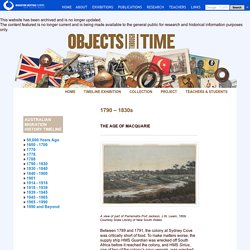
Lewin, 1809. Courtesy State Library of New South Wales Between 1789 and 1791, the colony at Sydney Cove was critically short of food. Australia's migration history timeline. The Emigrant, London, c.1850.
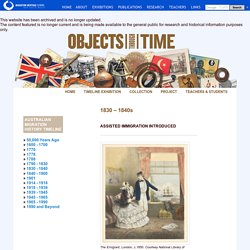
Courtesy National Library of Australia From 1815 the Colonial Government decided to promote the migration of free settlers and limit squatter land leases to 14 years. This was to create an emancipist consumer economy and improve the moral tone of the colony. 1840 Order Ending Transportation To New South Wales. Era: 1830 - 1840sCultural background: EnglishCollection: State Records NSWTheme:Communication Convicts Gaol Government Settlement Order-in-Council ending transportation to New South Wales, 22 May 1840.
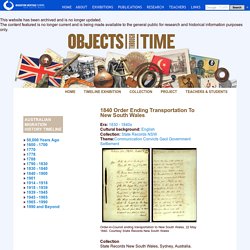
Courtesy State Records New South Wales Collection State Records New South Wales, Sydney, Australia. Object Name Order-in-Council. Object/Collection Description Order-in-Council ending transportation to New South Wales, 22 May 1840. Records of the 1828 Census inscribed on UNESCO. We are thrilled that records of the 1828 Census of NSW which we hold as part of the State Archives Collection have been inscribed on the UNESCO Australian Memory of the World Register.
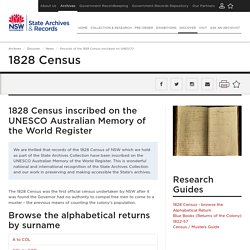
This is wonderful national and international recognition of the State Archives Collection and our work in preserving and making accessible the State’s archives. See details below for our exciting regional tour of the census. The 1828 Census was the first official census undertaken by NSW after it was found the Governor had no authority to compel free men to come to a muster – the previous means of counting the colony’s population. Browse the alphabetical returns by surname The Census covers some 36,500 inhabitants, both convict and free, and captures a social and economic picture of the Colony of NSW in November 1828, 40 years after the Colony’s establishment. Chapter.1157.body.
Introduction When we discuss settlement patterns, we look at the historical flows and migration patterns of the population over time.
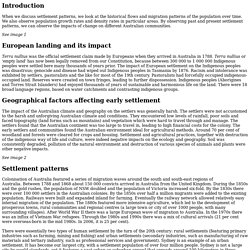
We also observe population growth rates and density rates in particular areas. By observing past and present settlement patterns, we can observe the impacts of change on different Australian communities. See image 1 European landing and its impact. Governor Bourke’s 1835 Proclamation of Terra Nullius. Era: 1830 - 1840sCultural background: Aboriginal, EnglishCollection: BritainTheme:Exploration Government Indigenous Relations Settlement Collection National Archives of the United Kingdom, Kew, England.
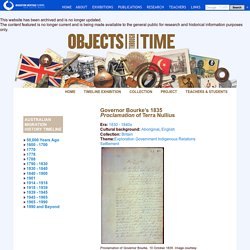
Object NameProclamation of Governor Bourke, 10 October 1835. 3228.0.55.001 - Population Estimates: Concepts, Sources and Methods, 2009. 1.4 Basic enumerations of the population have been made since the early days of European settlement in Australia.

These early enumerations were known as 'musters'. The first official 'muster' was taken in 1788 soon after a new settlement at Sydney Cove was formed, and in 1803 the first 'muster' of convicts in Van Dieman's Land (now Tasmania) was conducted. 1.5 A Census conducted in New South Wales in 1828 became the first in a regular series in that colony and periodic censuses were taken in the other Australian colonies. The dates of these colonial censuses are shown in Table 1.1. Historical Population of Australia, 1788 to Future. Convict Trail Project – Caring for the Great North Road. Image2.